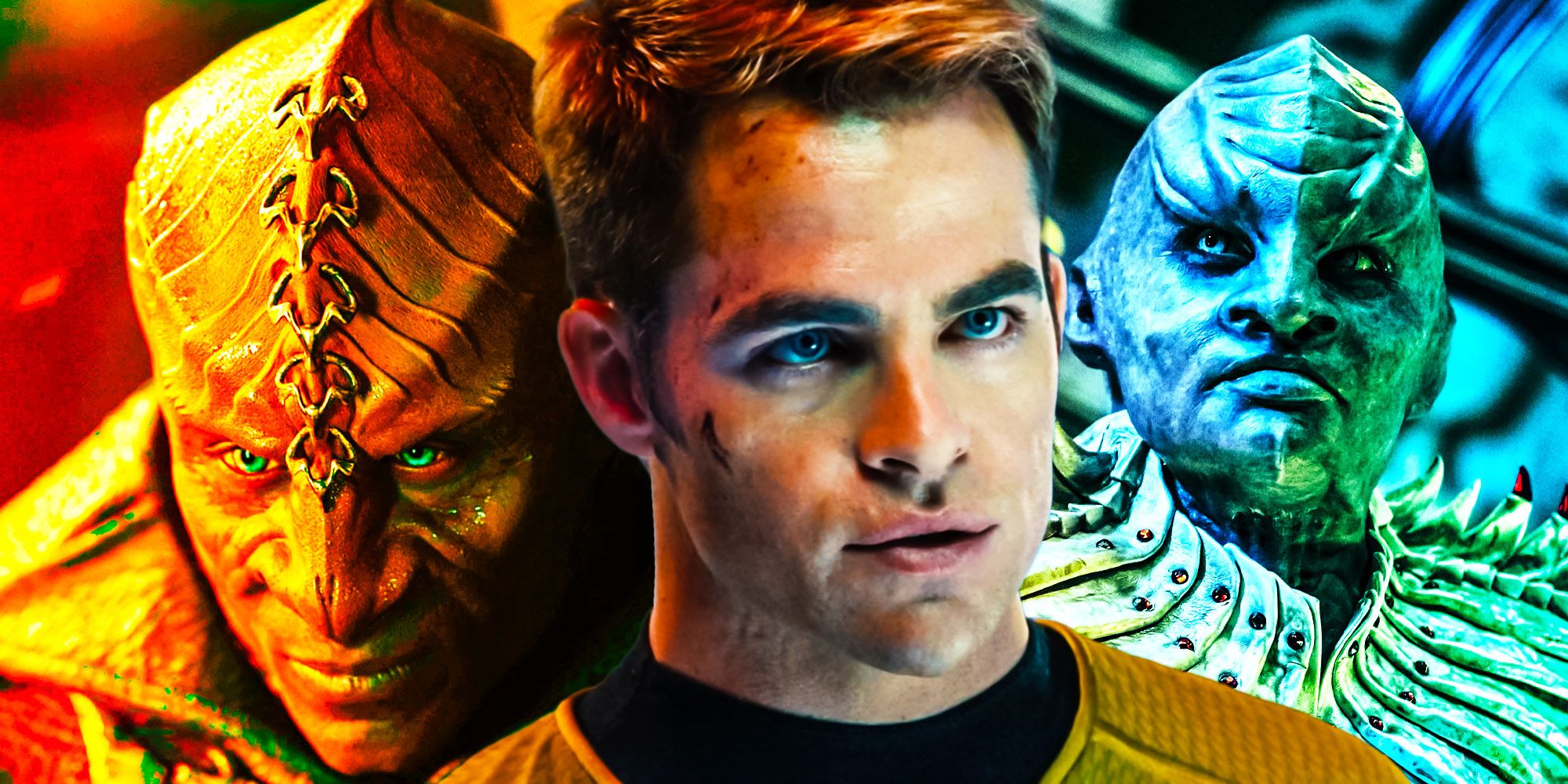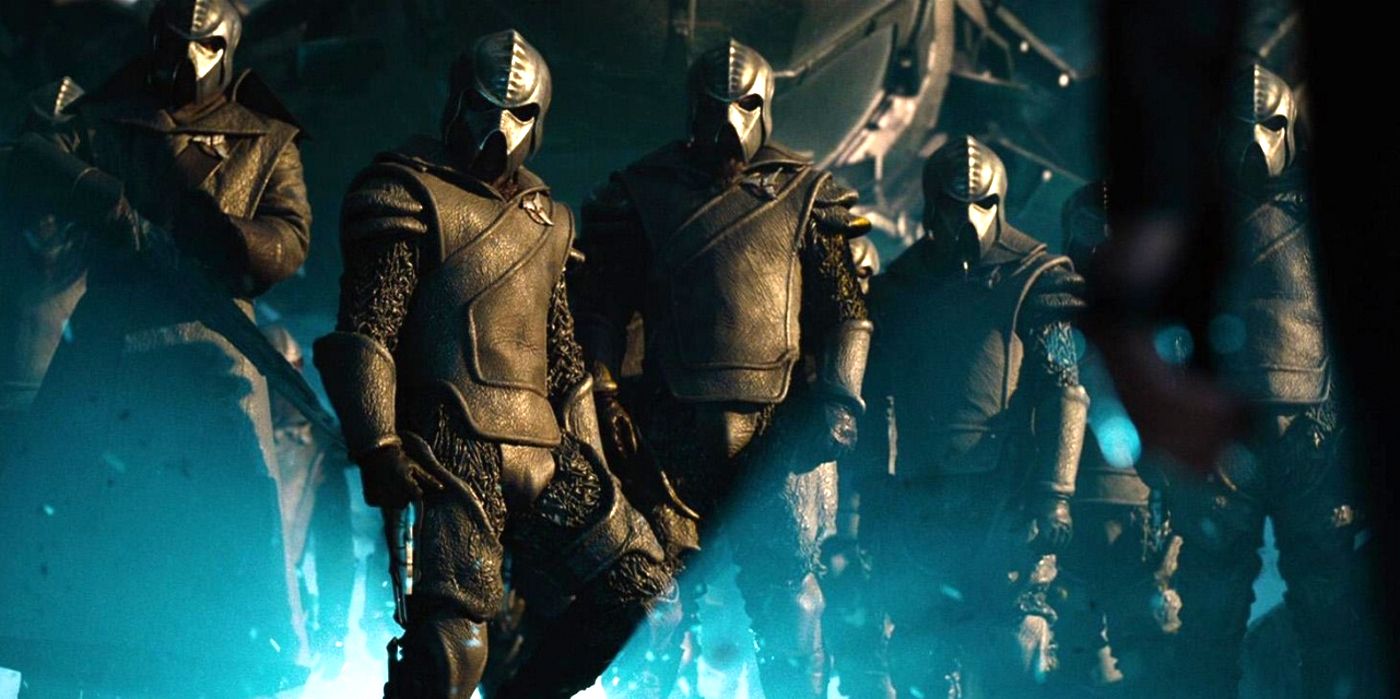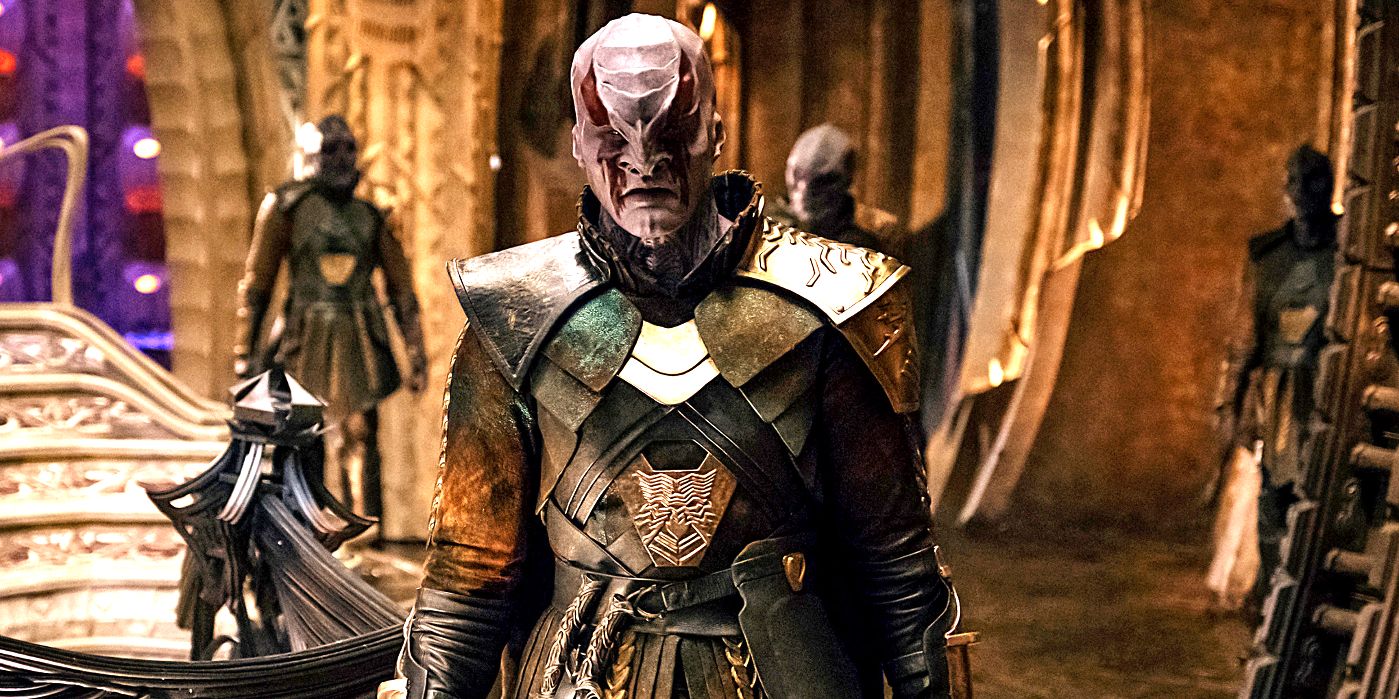The redesign of the Klingons on Star Trek: Discovery was unpopular with Trekkers, and it shows no one heeded the lessons from the similarly disliked revamp of the Klingons in Star Trek Into Darkness. J.J. Abrams' 2012 sequel showed Captain Kirk (Chris Pine) leading an away team to the Klingon homeworld to retrieve terrorist John Harrison, who turned out to be Khan Noonien Singh (Benedict Cumberbatch). In spite of the negative response to Star Trek Into Darkness' Klingons in the Kelvin Timeline, Star Trek: Discovery decided to make the warrior race appear even more alien in the Prime Timeline.
The appearance of the Klingons has been revamped multiple times, but fan response to their new looks in Star Trek Into Darkness and Star Trek: Discovery were decidedly negative. The Klingons originally looked human in Star Trek: The Original Series, but Star Trek: The Motion Picture completely changed their look into the now-familiar ridge-forehead, wild-haired, and armored design. This turned out to be the most popular look for the Klingons and was maintained throughout the TOS movies and the 24th century era of Star Trek: The Next Generation. TNG and Star Trek: Deep Space Nine also thoroughly explored Klingon politics and culture. So it's no surprise that Star Trek Into Darkness altering the Klingons look didn't go over well, but it is surprising that Star Trek: Discovery took the bold step of changing the Klingons in the 23rd century Prime Timeline and didn't expect a hostile response from Trekkers.
Why J.J. Abrams Redesigned Star Trek Into Darkness' Klingons
J.J. Abrams told Yahoo! Movies in 2012 that he changed the look of the Klingons in Star Trek Into Darkness because he thought the redesign was "incredibly cool." The director also rationalized that "it also shows that this ‘Star Trek’ was not trying to copy what was done nearly 50 years ago, but find its own rhythm, its own universe." To Abrams, the whole point of the alternate Kelvin Timeline was to break away from the TV series canon and give Star Trek a facelift.
The Klingons only had a few minutes of screen time in Star Trek Into Darkness and, in truth, the aliens were just one of the many, and much greater, issues plaguing Abrams' Star Trek sequel. What really rankled fans was that the director publicly claimed that Star Trek Into Darkness was not a rehash of Star Trek II: The Wrath of Khan when that was exactly what it was, with a few swaps and changes. There were also other aspects of the film that drew fans' ire, like Carol Marcus (Alice Eve) disrobing in front of Captain Kirk. The Klingons just joined the large list of what Trekkers disliked about Star Trek Into Darkness.
Do The Different Klingons in Discovery And Star Trek: Into Darkness Make Sense?
Star Trek Into Darkness takes place in the alternate Kelvin reality, but does it make sense that the Klingons look different? Nero's (Eric Bana) time travel created the Kelvin Timeline, which seemingly accelerated technology, but why would the Klingons evolve to look differently than they do in the Prime Timeline? The logical explanation, which Star Trek: Discovery also leaned a bit into, is there are many different kinds of Klingons, and they are not the monoculture it appeared to be in TOS and TNG.
However, Star Trek: Discovery presented the new Klingons as a monoculture, and the implication was that this is how the Klingons always looked. In Star Trek: Discovery season 2, the bald Klingons grew long hair, implying that they were shaping into the more traditional TNG-era Klingon look. But Star Trek has long struggled with the repeated Klingon changes and attempted to rationalize it with the Augment virus explanation. Star Trek Into Darkness and Star Trek: Discovery's Klingon redesigns just made it all more confusing to reconcile, and the negative response is a reason why the Klingons haven't appeared in live-action since Star Trek: Discovery season 2.



